By Falk Bock with photojournalism by Jessica Robertson
[Editor’s note: In the spirit of our founder Dave Robertson’s motto, “The adventure continues….”, this is the first article in our new featured series, Sea Stories. This story comes from our own shop manager Falk, about a recent day-trip adventure with ocean rower Jordan Hanssen. We plan to feature more stories from our team, as well as those of our customers in coming months. If you have a story you’d love to tell, or an adventure that you’re planning to take in one of our boats, please contact us here.]
As those of you who regularly follow our blog posts may already know, our friend Jordan Hanssen of OAR Northwest is a remarkable man with a passion for rowing. I first met him at the Seattle Boat Show in 2006 where he and his crew were fundraising for a rowing race – from New York to Falmouth, England. After that little adventure was over Jordan wrote a book about it – Rowing Into the Son – a worthwhile read!
While stuck behind a keyboard the following summer Jordan decided he needed a bit of exercise, so he and his team-mate Greg borrowed a Melonseed from us and rowed it around the Olympic Peninsula. There’s a write-up of that trip from 2008 in the archives.

From the circumnavigation of the Olympic Peninsula in 2008. A young Jordan Hanssen contemplates his future….
Jordan and I were talking this spring and we got to discussing one particular incident on that trip – the boat had been beached at the Queets River on the Pacific coast, and was unable to make it back out through the surf. Jordan mentioned that he had always wanted to go back and try again – to see if he couldn’t figure out how to handle the challenging conditions. Of course I immediately offered to help.
We finally made it out to the coast on a beautiful Sunday in September. Our chosen destination was Westport, for the convenient launch facilities and variety of beaches. We’d be able to choose our difficulty level, hopefully starting small and working our way up to more challenging conditions. My wife was along with a camera for posterity, and we set out to push some envelopes.
The beach we chose was just inside the mouth of the harbor, sheltered at one end by a breakwater, but exposed to open water to the east. We wouldn’t have to deal with the full brunt of the Pacific, and would be able to move towards the sheltered end of the beach if we needed to.
The boat we were using is Jordan’s personal craft – a custom built hybrid of Jersey Skiff hull with a Melonseed interior. It would give us the handling of a Jersey Skiff, but with the tandem seats and huge flotation of the Melonseed. Jordan has rowed this boat down the full length of the Mississippi – twice. By his estimate it has over 5000 miles under its keel at this point.
I’ve been spending time on the water for most of my life, and Jordan far more than myself. But neither one of us has ever really played in surf – it just doesn’t come up in Puget Sound! 😉 This was going to be a learning experience for both of us. We were fully armed with our safety gear, to be sure.
After putting in at the local boat launch and a brisk row out to our target beach, the first order of business was going to be getting the boat to shore. We decided that a steering oar was in order – I sat in the back with an oar, Jordan provided power, and off we went. The run went smoothly, we coasted in to the beach . . . and promptly took a load of white water over the stern when the wave broke around us.
An interesting experience.
We immediately turned around to try again. The launch was going to be tricky. It was at this point that we realized the disadvantage of the beach we had chosen – the waves were breaking very close to shore, giving us no time to get set before having to deal with the surf. There was no chance of both of us getting into the boat and sorting out oars before tackling the waves – the boat would have been swept up onto the beach and full of water long since.
So I held steady while Jordan got situated, and then I pushed off and hung on. The results were dramatic. On our first attempt we got the timing right, more by luck than any skill on our part, and we made it out without too much drama. A fair amount of water did come aboard, mostly before we pushed off, but the boat remained manageable and once we were clear we had things dried out in short order.
On our second attempt at beaching we decided that since weight in the back got us wet the first time, maybe we’d both stay at our stations and row all the way in. That felt pretty good at the time, and went smoothly; looking at the pictures as I write this the day after, I can see a hint of what was to come.
Buoyed by our initial success, we immediately turned around and headed back out. This time however, our timing was less perfect – there was a set of rollers coming in as we were going out, and Jordan got some serious air time. It felt pretty dramatic, and it looked more so from the beach. But we did once again launch successfully.
This, my friends, is how things go awry. A cautious attempt succeeds, follow-up efforts are met with success due to a little bit of luck, and with a new-found sense of confidence you go big – only to realize that maybe you haven’t quite figured it out after all . . . ?
Since our last landing had worked so well, we decided to do the same thing over again. Of course, looking at the pictures of our previous attempt, what happened next should not have been surprising in the least. We caught a slightly larger wave, and with our weight forward, the boat pearled and sent us flying.
From my perspective it came out of nowhere – we were pulling hard for shore, and suddenly I was looking at the boat silhouetted against the sky, a split second before the water closed over my head. My immediate thought was “Go deep – that thing’s gonna be coming back down!”
I surfaced . . . and it was all over – the boat awash on the beach, oars bobbing in the surf, and us looking wet and surprised.
Luckily the camera caught it all in glorious detail, and we could see exactly where it all went wrong. With our weight forward on the seats, the wave picked up the stern and buried the nose of the boat. Then the whole thing just flipped end over end and got tumbled. In hindsight, having someone in the back with a steering oar as we’d done the first time was probably the best approach. Even with the certainty of taking on some water, we needed our weight further back to keep the nose up.
“Minor setback!” we said. “Get back out there and try again!” Let the water drain, retrieve the gear, a little lamentation over the loss of a bailing scoop – and we were ready to go.
Alas, it was not to be. On the next launch, a big wave came seemingly out of nowhere and promptly smacked the boat back into the beach. There was a loud snap reported from observers on the beach – I missed it since my head was under water again – as one of the oarlock pins, a half inch rod of manganese bronze, sheared clean off.
Yep, we broke it.
After this, the decision was reached to maybe take a step back and have a breather; possibly moving the boat to a more sheltered section before trying again. After all, that was a lot of mass being thrown around, and someone might get hurt!
So we pulled the boat up the beach and went for a walk. Just across the dunes was the outer beach, with the big waves coming in unimpeded. Unlike on our little beach the waves were breaking repeatedly, with the first line being impressively tall – to my inexperienced eye it looked to be about 8 – 12′. They would then rebuild and break again in shallower water, repeating the cycle 3 – 4 times before washing up on the beach.
This was where all the people were – there were surfboards, kayaks, kites, and kids all over the beach. But we decided from our vantage on the dunes that this might be a bit much to attempt today. The boat would no doubt handle the smaller waves close in, but would arrive at the big monster break already full of water. It might be possible to make it through with impeccable timing and a bit of luck, but that was definitely beyond our abilities.
Reassured that we wouldn’t have to try it today, we turned back to our own challenge, which suddenly seemed much more approachable.
Watching the waves on our walk back to the boat, I started to find the patterns, and spot the shadows of the big waves further out. This was no doubt helped by calming conditions – the “local” chop was dying down, and we were left with sets of big waves coming in from the northwest.
At this point we were both pretty tired, and feeling satisfied with the day’s results. All we wanted was an uneventful launch and a quiet row back to the boat launch. After some discussion, we decided to try again, paying close attention to the bigger waves coming in.
A well-timed push later, and we were through – with not so much as a splash coming into the boat. Aha – it IS possible!
I’ve had a few days to think about this adventure now, and how it changes the way I look at the Jersey Skiff. The conclusion I’ve come to is that the skiff lives up to its reputation.
I already knew it could handle all the green water out there. Riding the swell in Grays Harbor was comfortable and exhilarating – some of those waves were five and six feet tall, and the boat didn’t so much as rock as they swept by under us. Once we got into the surf the skiff still didn’t disappoint. It handled the smaller stuff easily, and when we didn’t screw things up the larger waves were also manageable.
Looking at the pictures, the waves that were tossing us around were upwards of four feet high – I think we can safely say that those might be outside the design parameters of the boat.
This is essentially a case study in why it’s important to have the right boat for the right task. The Jersey Skiff is, after all, a fishing boat — not a surf dory. It handles wonderfully in most conditions, launches well in moderate surf, and is a lovely rowboat. Not to mention it can work; we left the boat launch with four crab traps which we set on the way out, and we returned with a very tasty dinner scrabbling around in the bilge.
While we did have some issues with whitewater coming over the bow – or the stern – I’ve come to a couple of conclusions – one is that these were particularly challenging conditions, and even with a good amount of water on board, the skiff handled itself well. So launching in rough stuff is feasible, and a less than perfectly successful launch is not a big deal. Just don’t try to tackle six foot surf!. 🙂
Though not everything went as planned, part of the adventure is in facing the unexpected and learning things along the way. There are some things that a learning curve can prepare you for. There are others that you’ll never be prepared for regardless of how great your skills and equipment are. Please respect the ocean, boat responsibly, and know your limits.
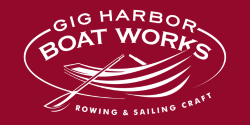
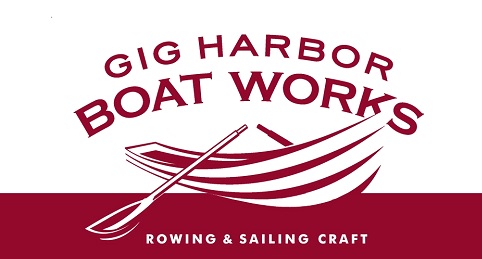
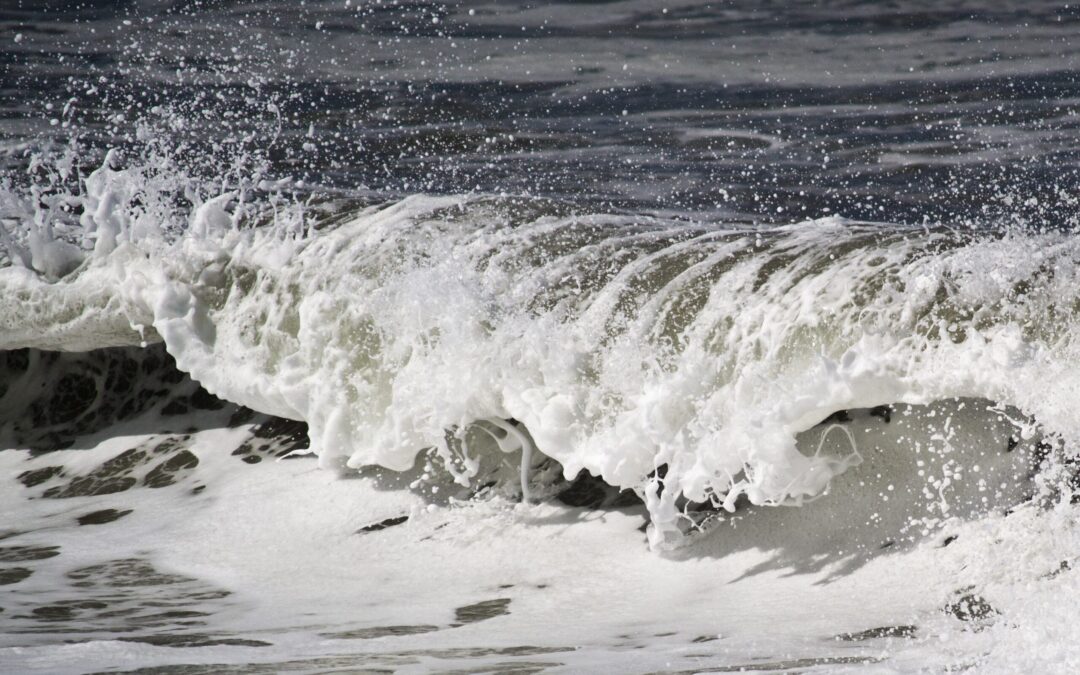
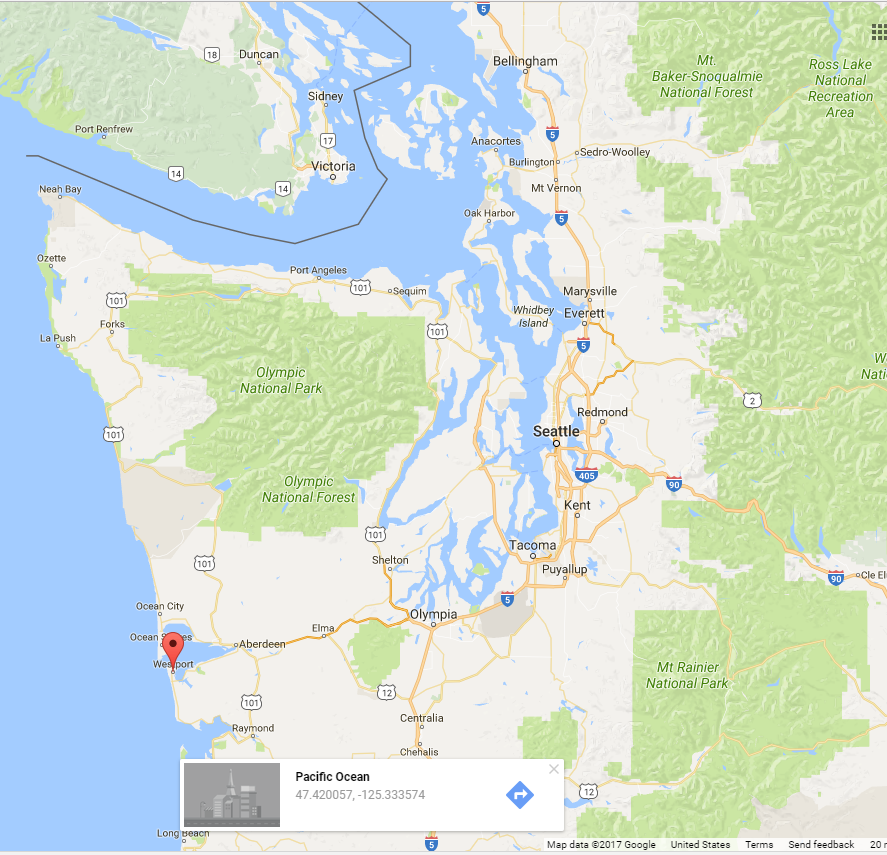
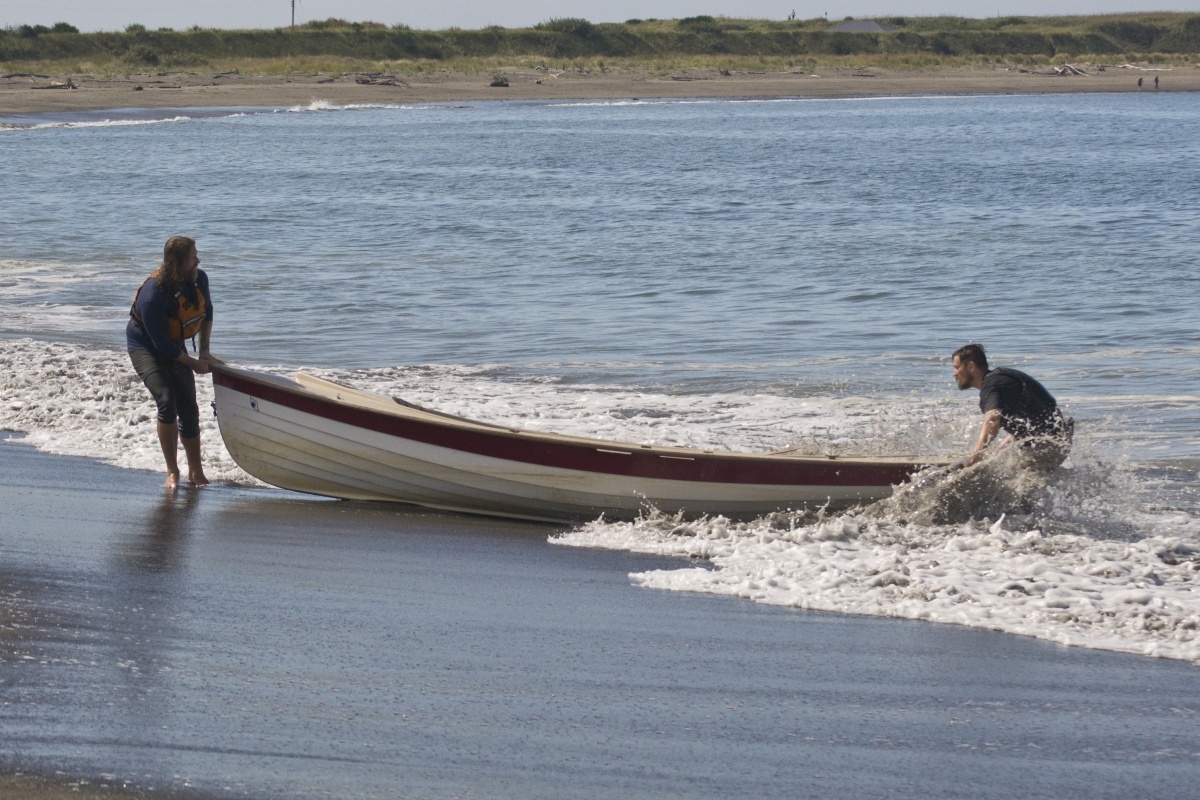
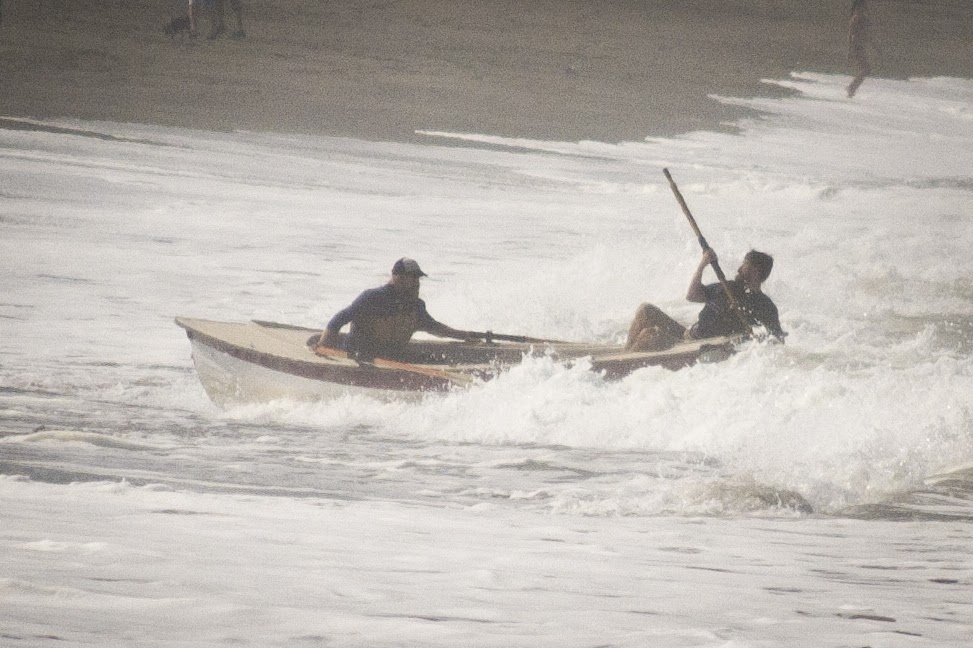
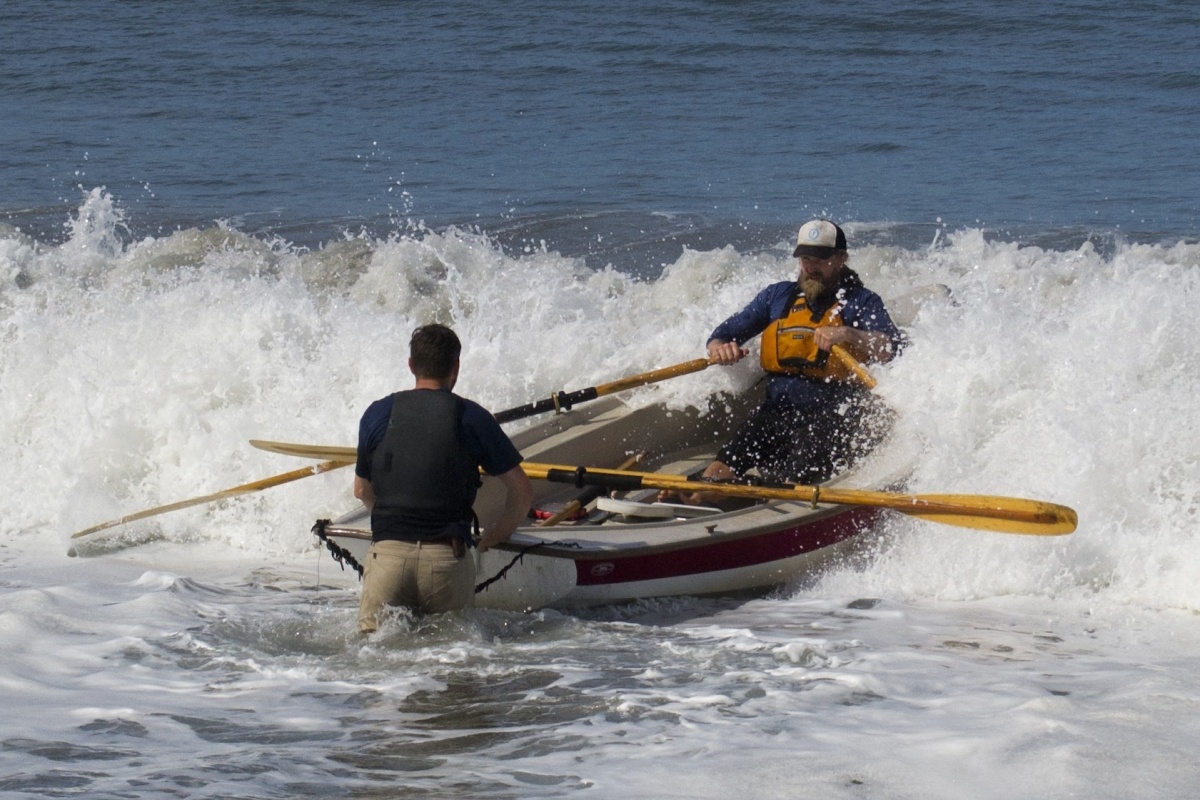
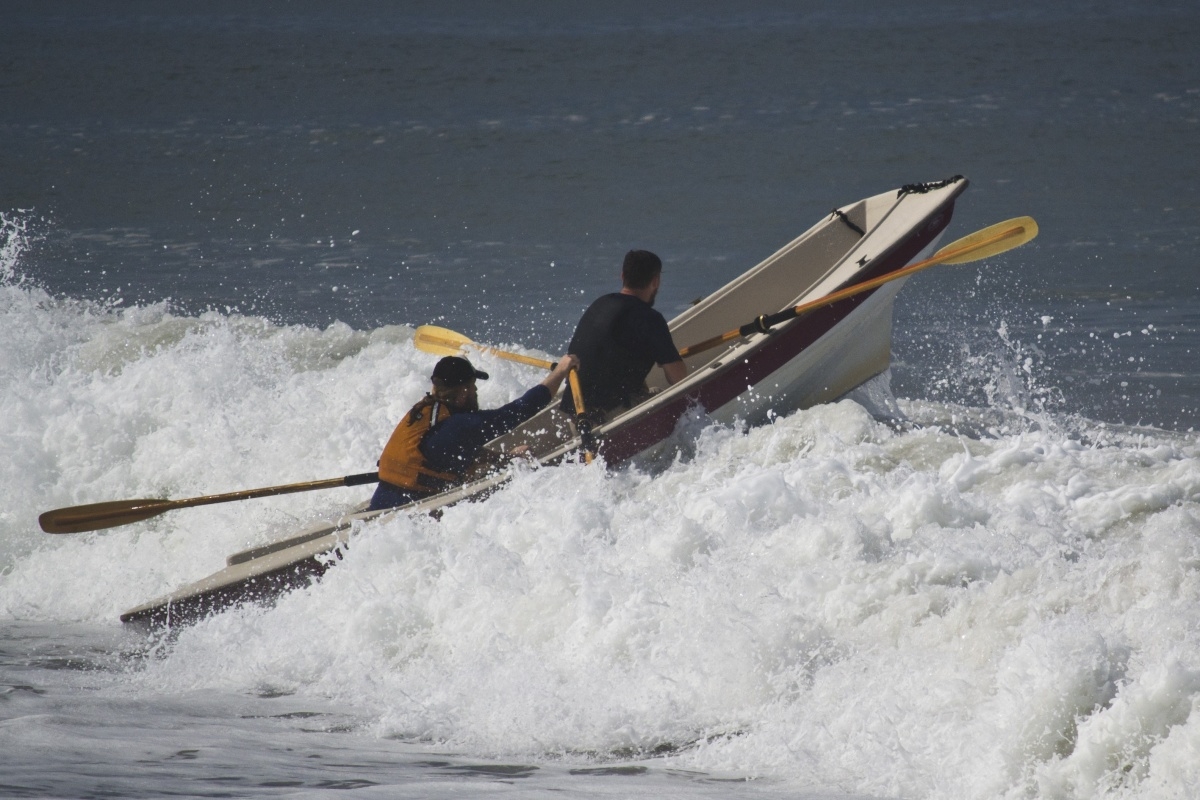
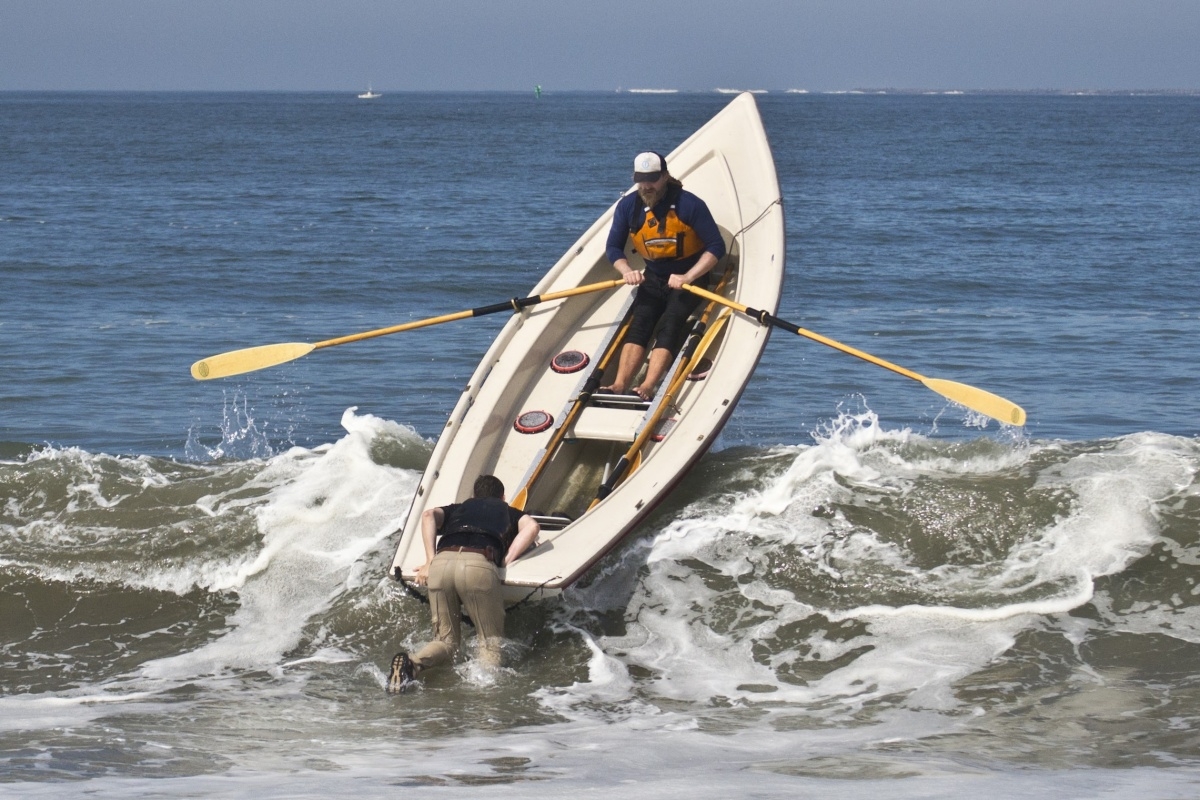
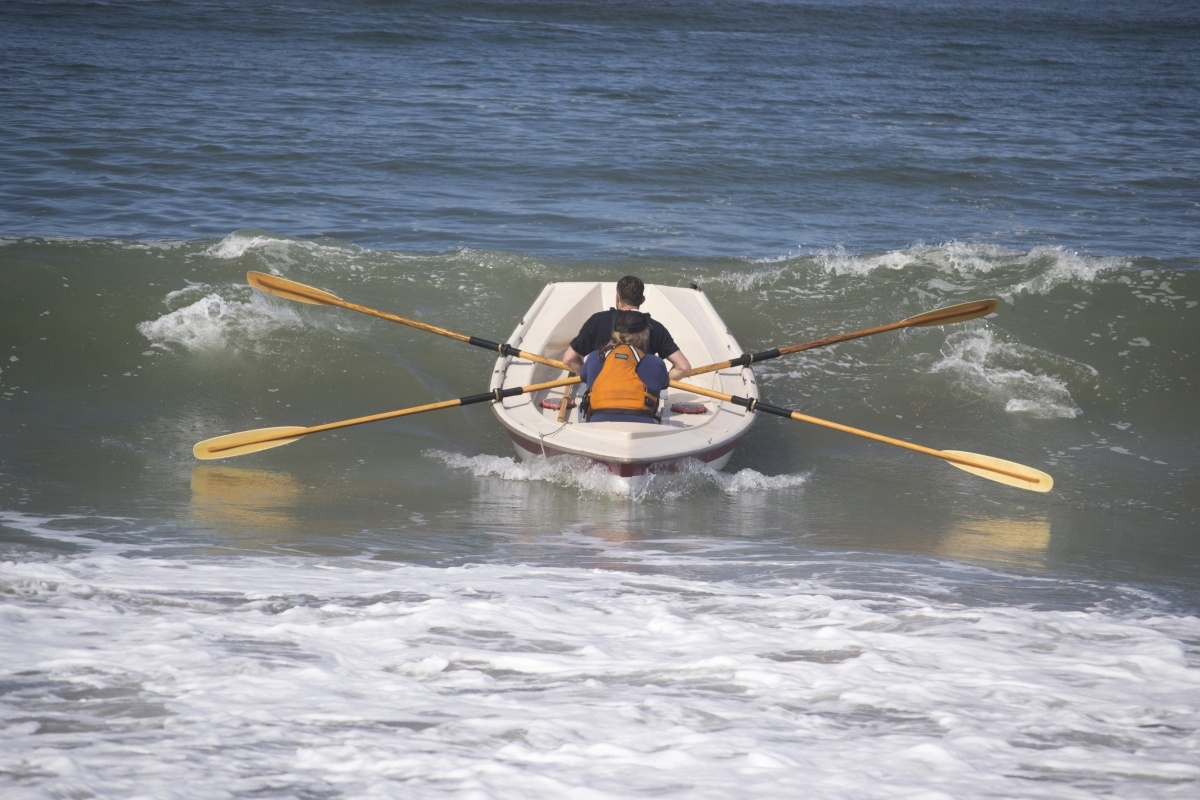

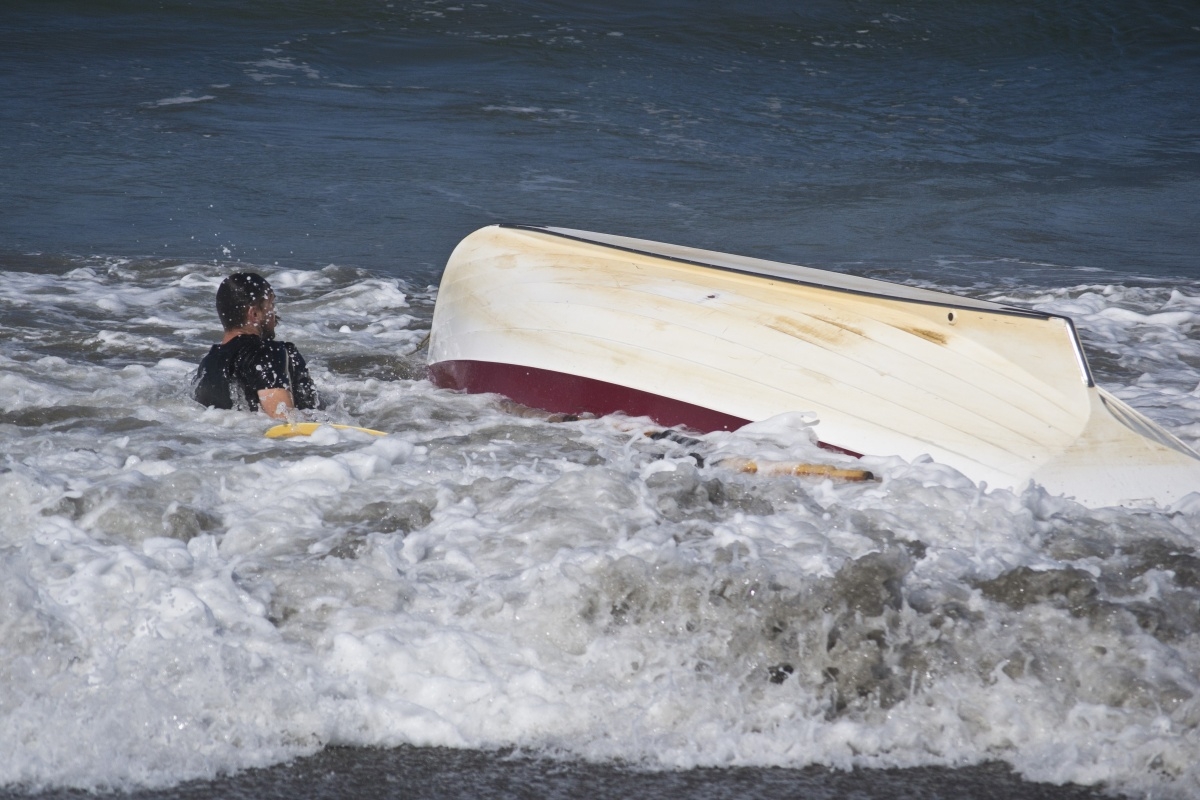
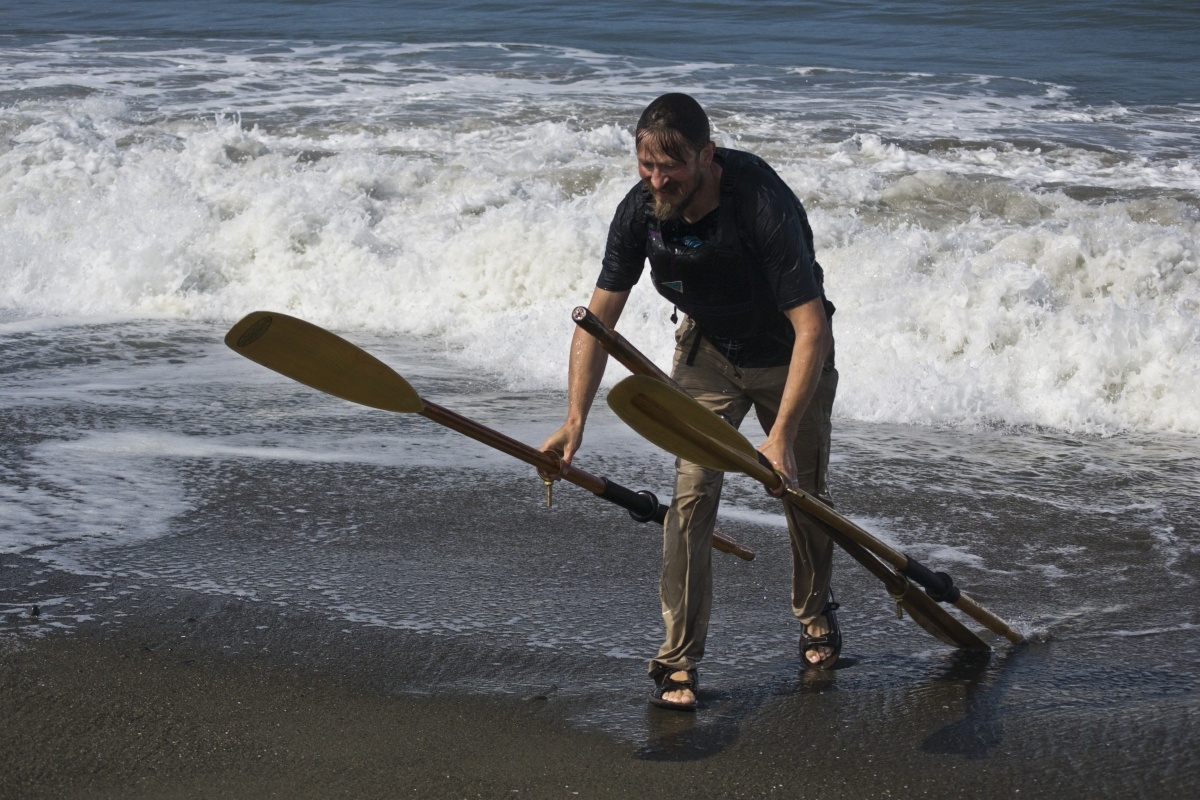
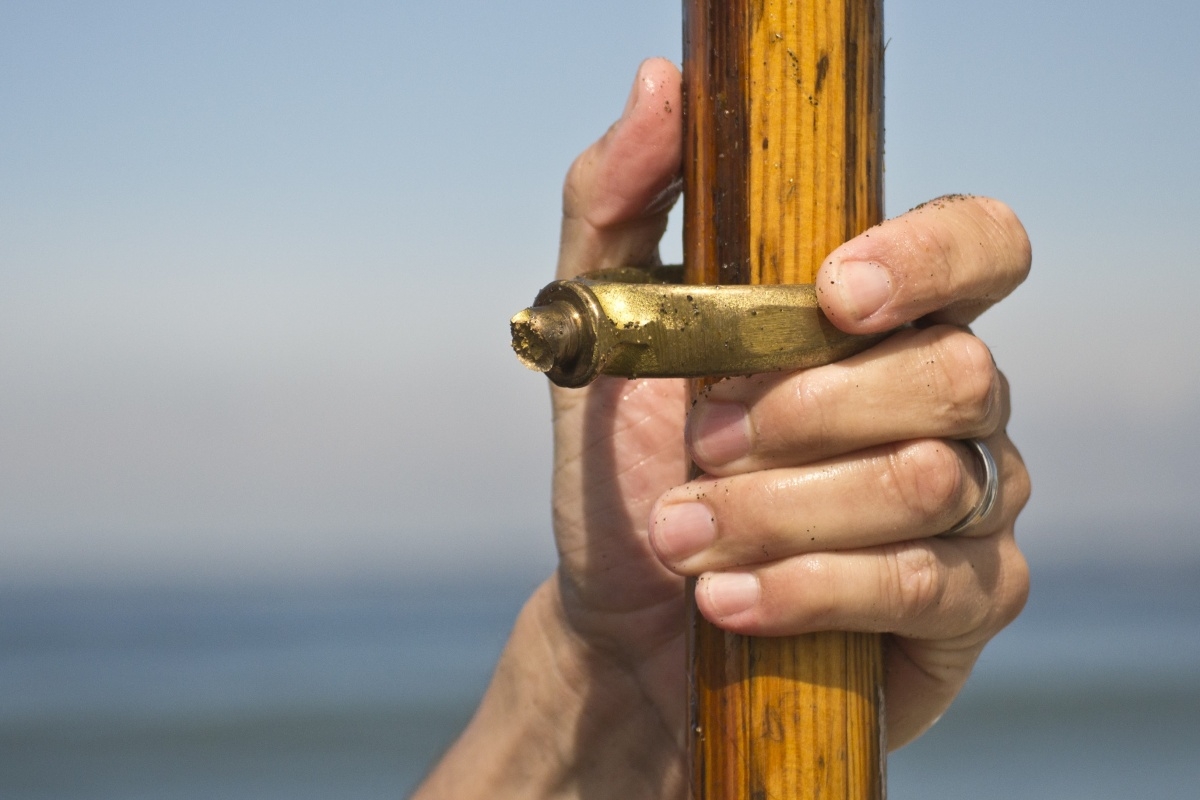
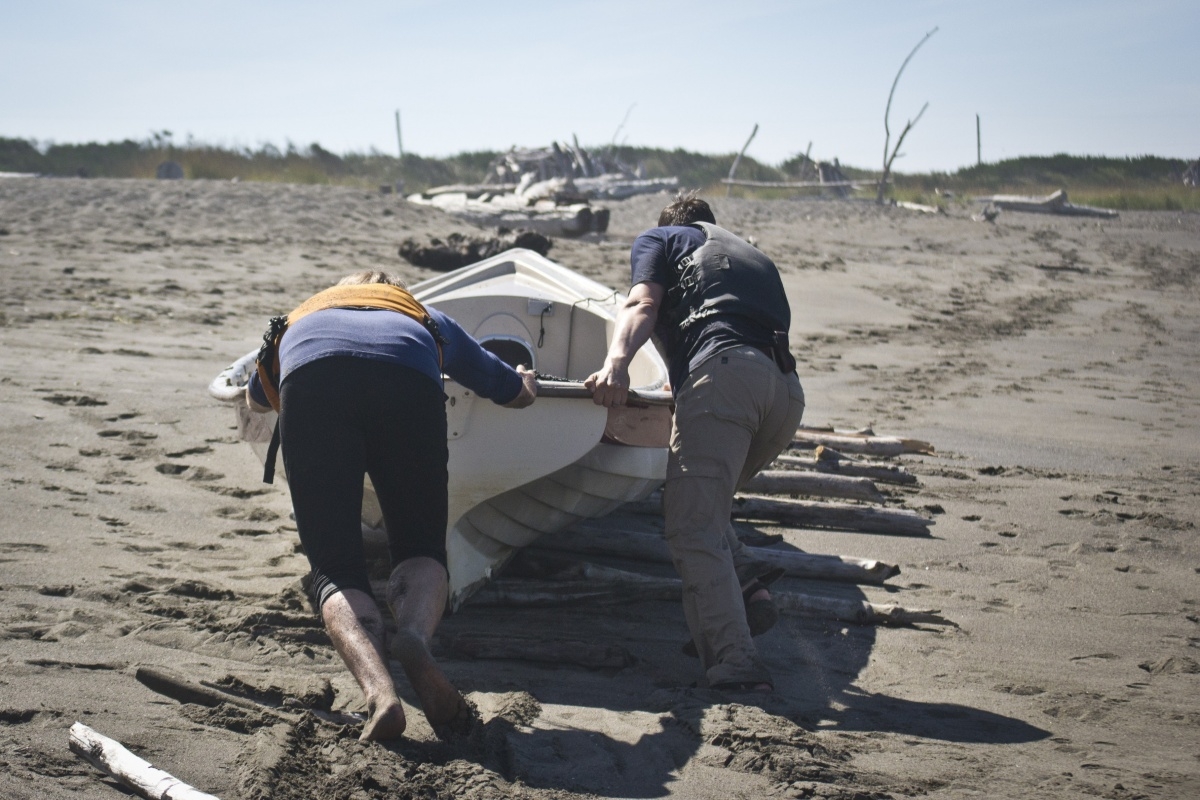

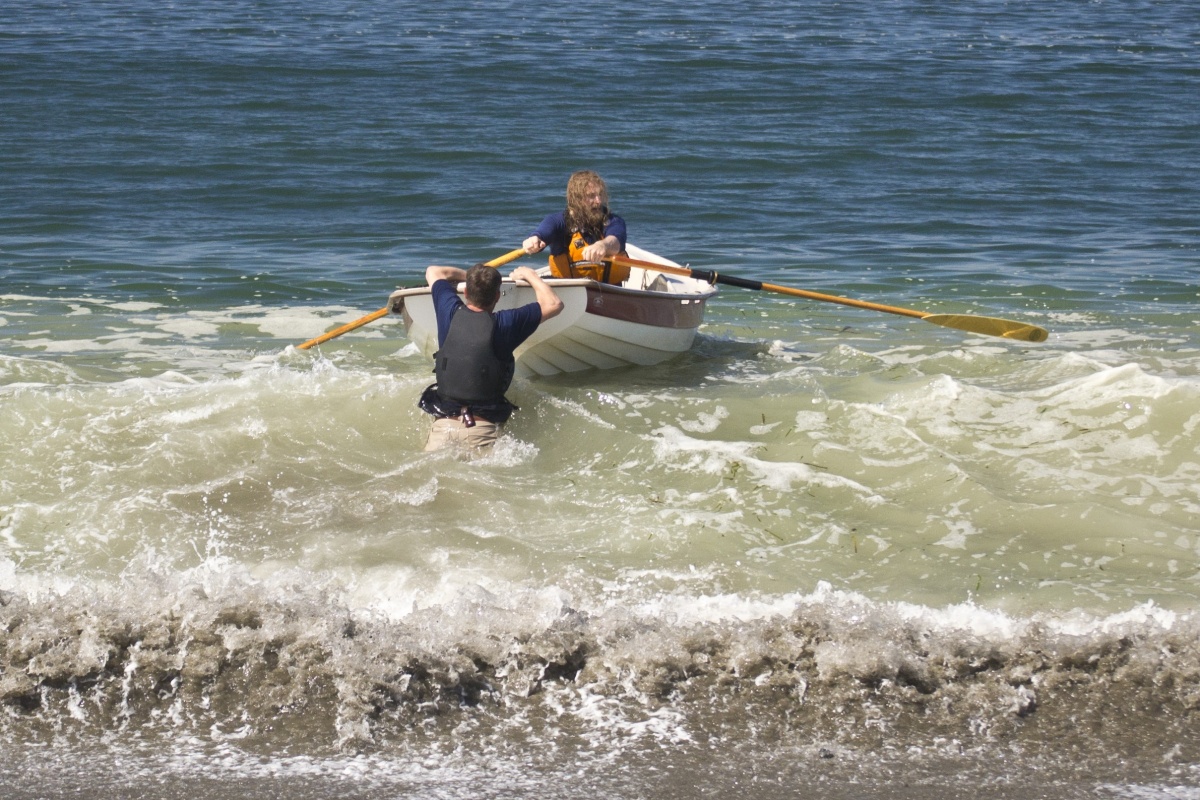
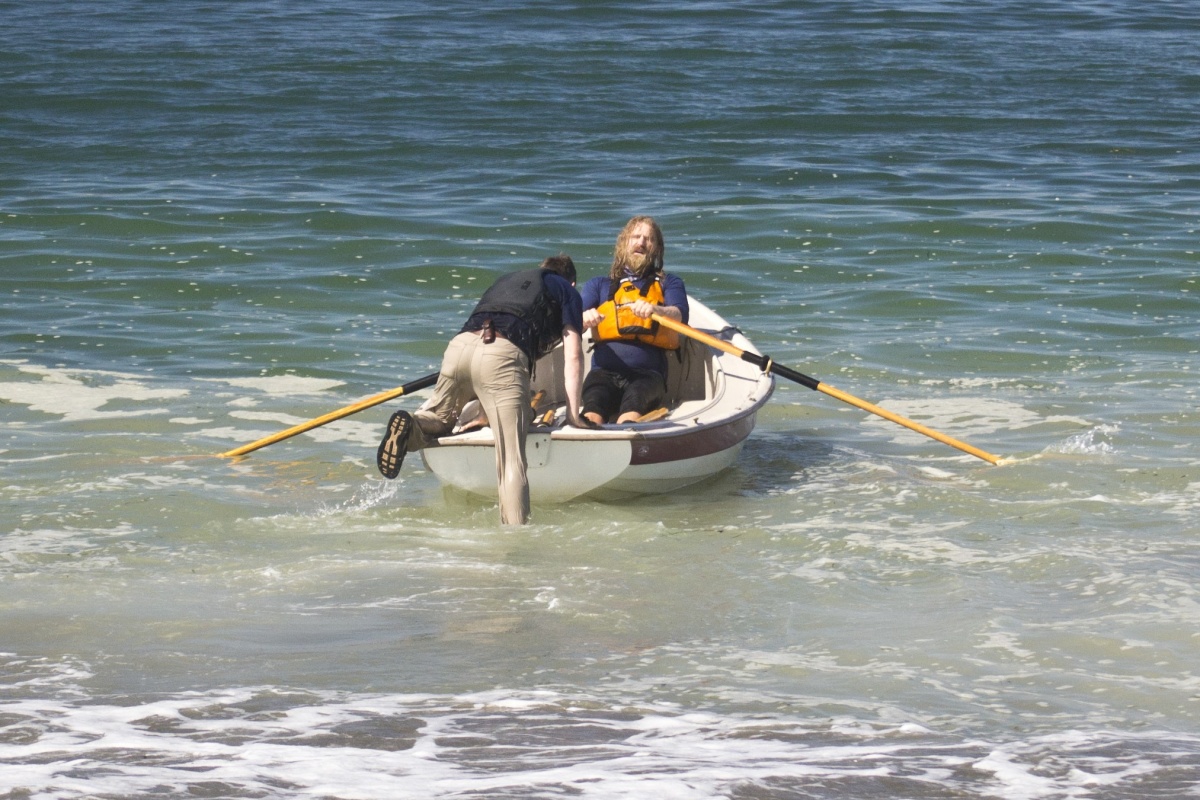
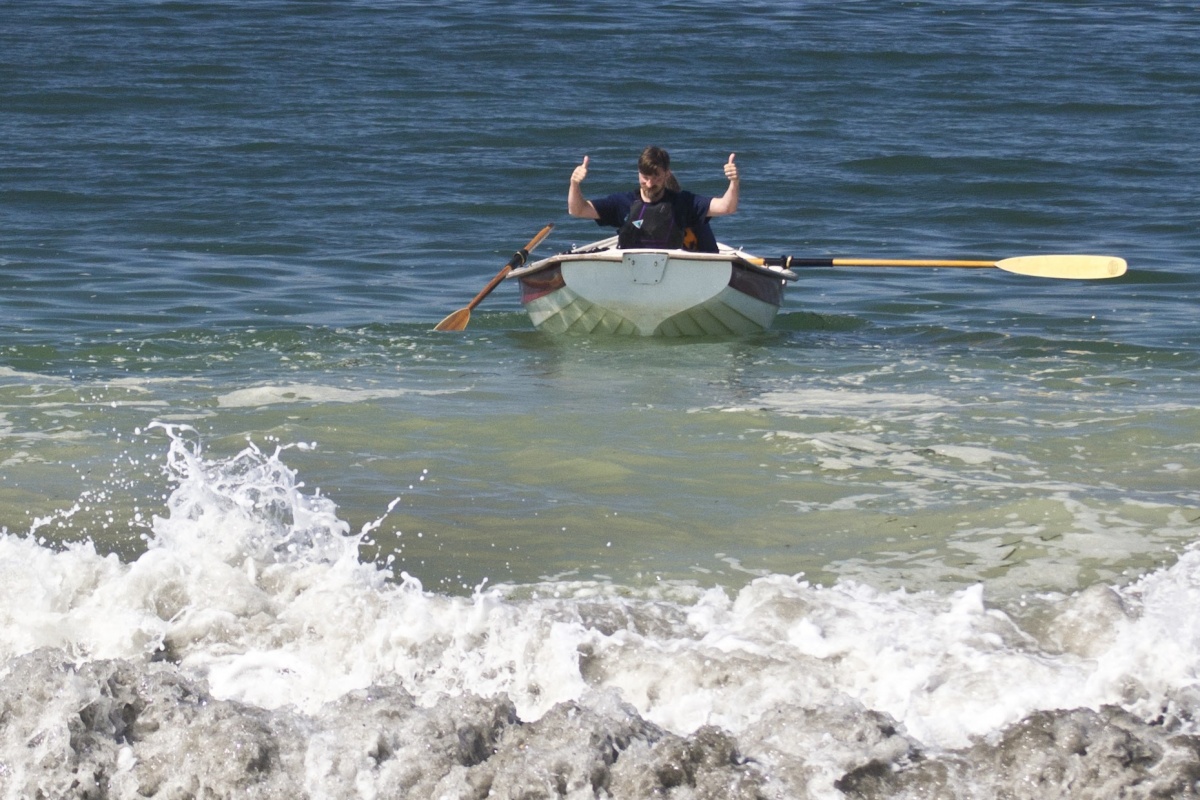
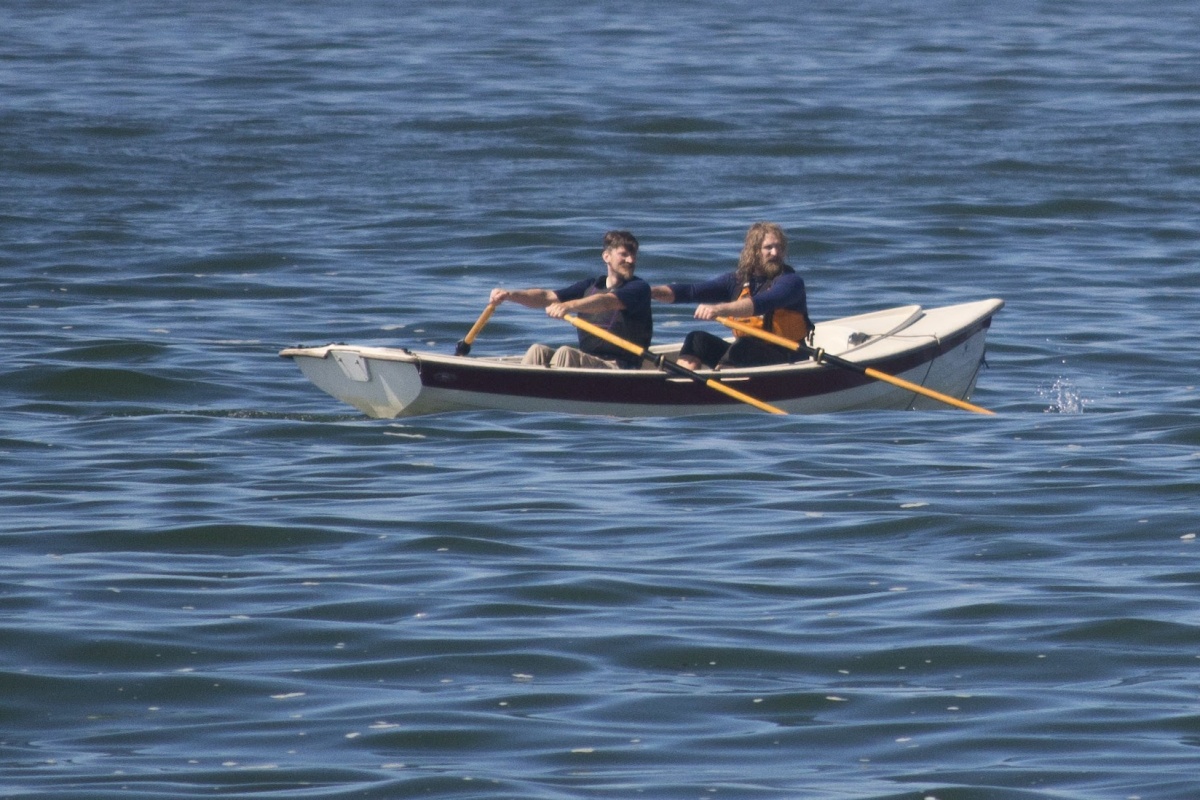
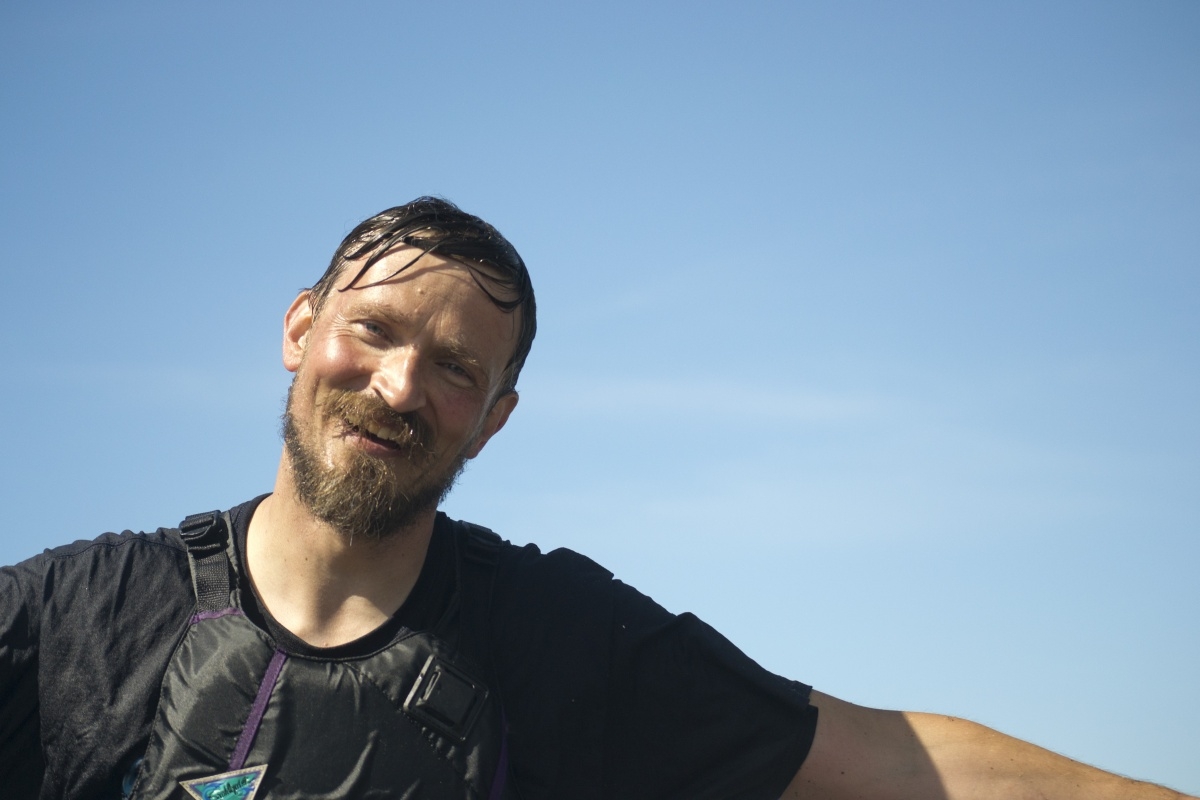
Awesome story. You are inspiring me to explore sw coastal Florida with Melonseed. Surf nowhere near what you experienced but some interesting places like Ten Thousand Islands area and Tampa Bay.
Yo, Falk;
Reading the surf story made my morning!
Any landing’s a good landing they say!
Coulda been a lot worse though, huh?
Aloha,Greg W
Interesting story of trial and error and some success. Luckily you survived only wet and tired.
I grew up spending a month every summer on the “Jersey ” shore in a town at the head of Barnegat Bay. Each beach
had a lifeguard stand with a large rowing skiff ( heavy )with double rowing stations. I have seen the lifeguards roll that boat into the surf and power their way to a rescue in knarly seas. Their training made this possible but sheer strength was also a factor. Although waves come in sets, I don’t think they had time to launch with much though
to timing. Although there was always shore break at high tide at most of the beaches I frequented I remember it as manageable. Low tide had small waves inside gaining height as one went deeper. Sometimes the lifeguards would take the boat out just for practice . It
was definitely impressive to watch them roll the boat into the water and take off.
JoAnn, those lifeguard boats were definitely part of our inspiration for this undertaking. And while power and skill are a huge part of the puzzle, having the right boat for the conditions is essential. It is amazing to me what serious surf rowers can accomplish, both in terms of physical performance and in what the boats can do.
Thank you for reading, and thank you for your feedback!
-Falk
Wow.
Just Wow!
Come see the Gig Harbor Melonseed at the United States Boat Show, Annapolis, MD., Oct 5-8!
http://www.annapolisboatshows.com/united-states-sailboat-show/